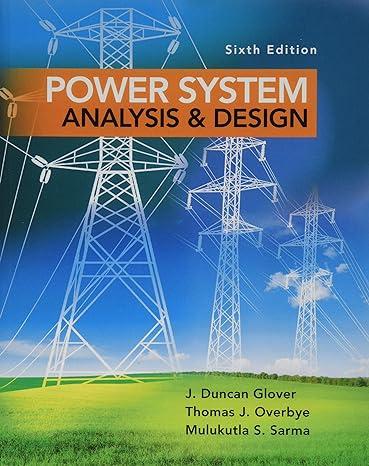A three-phase impedance load consists of a balanced- (Delta) load in parallel with a balanced-Y load. The
Question:
A three-phase impedance load consists of a balanced- \(\Delta\) load in parallel with a balanced-Y load. The impedance of each leg of the \(\Delta\) load is \(Z_{\Delta}=\) \(6+j 6 \Omega\), and the impedance of each leg of the Y load is \(Z_{Y}=2+j 2 \Omega\). The Y load is grounded through a neutral impedance \(Z_{n}=j 1 \Omega\). Unbalanced line-to-ground source voltages \(V_{a g}, V_{b g}\), and \(V_{c g}\) with sequence components \(V_{0}=10 \angle 60^{\circ}, V_{1}=100 \angle 0^{\circ}\), and \(V_{2}=15 \angle 200^{\circ}\) volts are applied to the load.
(a) Draw the zero-, positive-, and negative-sequence networks.
(b) Determine the complex power delivered to each sequence network.
(c) Determine the total complex power delivered to the three-phase load.
Step by Step Answer:

Power System Analysis And Design
ISBN: 9781305632134
6th Edition
Authors: J. Duncan Glover, Thomas Overbye, Mulukutla S. Sarma




